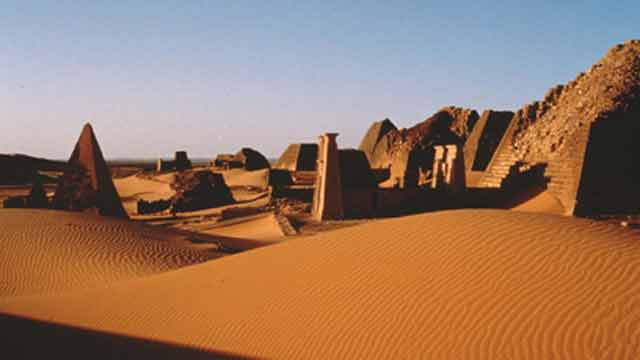
Egypt’s Golden Empire 3x60
An EMPIRES Special
In 1560 BC, when Rome was still a marsh and the Acropolis was an empty rock, Egypt was already 1,000 years old. Although the period of the pyramid-builders was long over, Egypt lay on the threshold of its greatest age. The New Kingdom would be an empire forged by conquest, maintained by intimidation and diplomacy, and remembered long after its demise.
Led by a dynasty of rich personalities, whose dramatic lives changed the course of civilization, EGYPT’S GOLDEN EMPIRE presents the most extraordinary period in Egyptian history—from 1560 BC to 1080 BC—when the Egyptian Empire reached its zenith.
Amazingly preserved letters and records bring to life the passion and incomprehensible riches of a time when Egypt was the center of the known world, and its Pharaohs were known as gods. Great cities, temples and tombs were built; and art, education, and technology were propelled to new heights. From Ahmose, Hatshepsut, and Amenhotep III, to Akhenaten, Tutankhamen and Ramesses the Great, EGYPT’S GOLDEN EMPIRE reveals with startling clarity the hopes and dreams of the Pharaohs and ordinary citizens who created the first great empire in history.
WARRIOR PHARAOHS
Already 1,000 years old, Egypt is a shadow of its former self. By 1560 BC, the kingdom lies divided among foreign rulers. But Ahmose, one of the last Egyptian princes, rises to defeat the Hyksos and the Nubians. The New Kingdom is born, uniting Egypt once again. After Ahmose dies, Hatshepsut becomes the first female Pharaoh. Striving for legitimacy, she embarks on an ambitious building program and opens new trade routes. Her son and successor, Thutmosis III, campaigns extensively in the Near East, and brings much of the ancient world under Egyptian rule. The concept of “empire” is born.
PHARAOHS OF THE SUN
By 1400 BC the Egyptian empire stretches from Northern Syria to the Sudan in Africa. Led by Amenhotep III, it is a golden age of wealth, power, and prosperity. Remarkable diplomacy is used to keep the empire’s rivals at bay, while the provinces of Egypt revel in their protection. Art, technology, and new ideas flourish. Egyptian rulers are seen as gods. After the death of Amenhotep III, his son Akhenaton initiates drastic changes. Consumed by a monotheist belief, he orders a new capital built in the desert, marries the beauty Nefertiti, and embarks on a campaign of religious repression. When he dies, the new capital is abandoned. The death of his son-in-law, the boy-king Tutankhamen, marks the end of the Ahmose dynasty.
THE LAST GREAT PHARAOH
A new dynasty emerges. Threatened from abroad, Ramesses II leads an army north to fight the Hittites at Kadesh. The battle becomes his crowning achievement, and the basis for a new period of stability and wealth. Resources flood into Egypt. A new capital is built, artisans revel in an explosive period of building, and The House of Life becomes the intellectual center for the empire. However, foreign powers once again threaten, and some provinces question their allegiance. After the long reign of Ramesses II, the great tombs are systematically looted, and civil war ensues.
Though Egypt is once again divided, the period known as the New Kingdom has left a rich legacy that will reverberate through the ages.
Share This Program